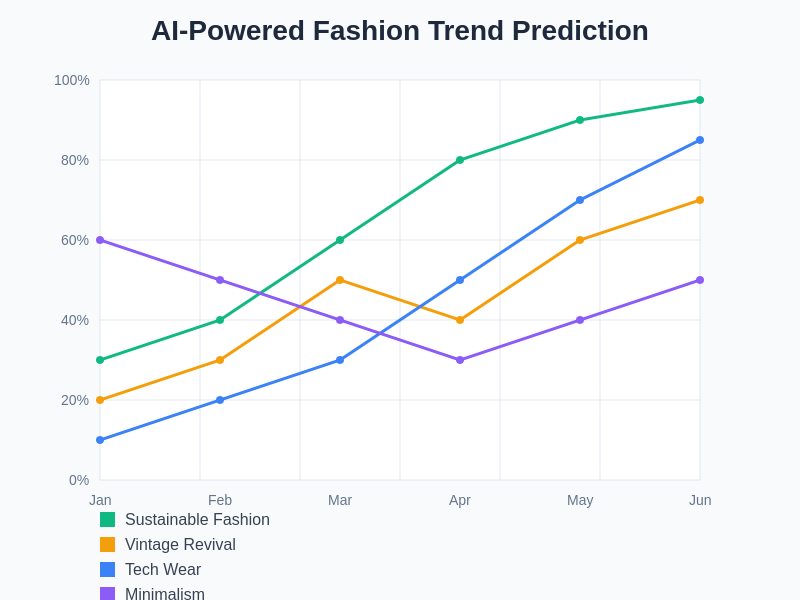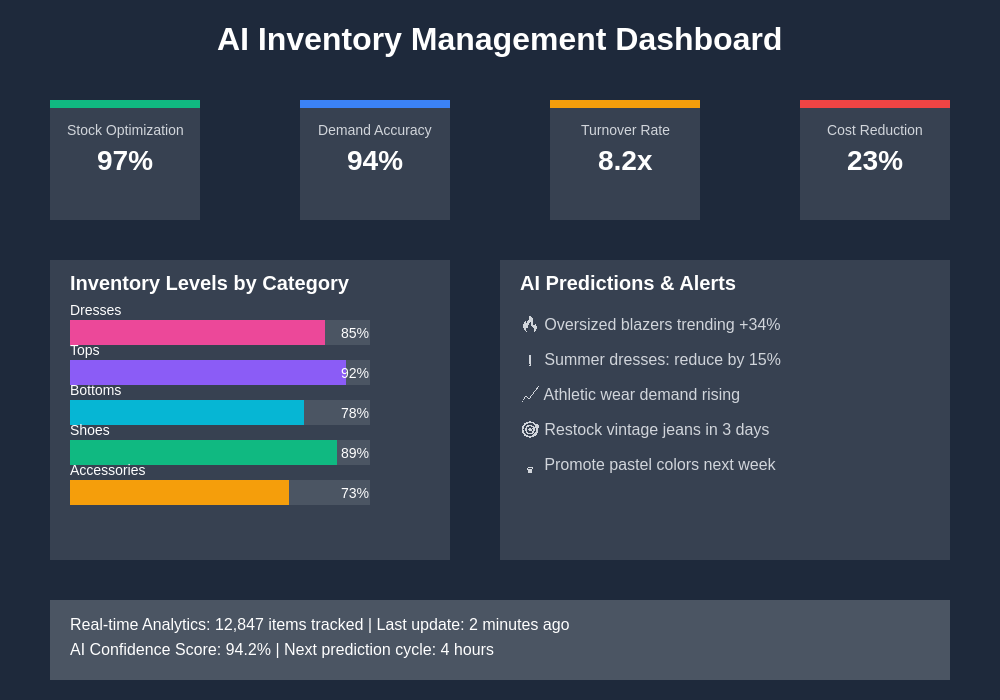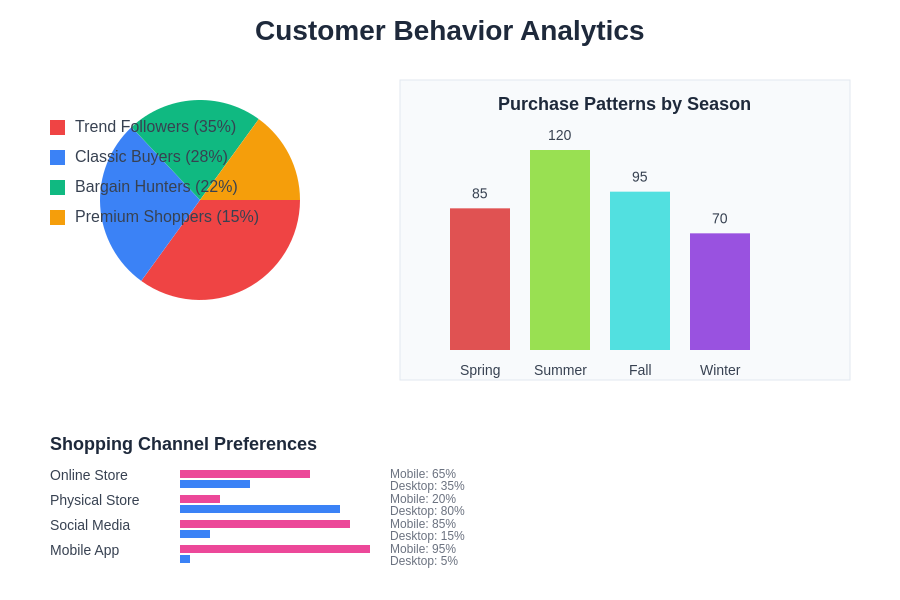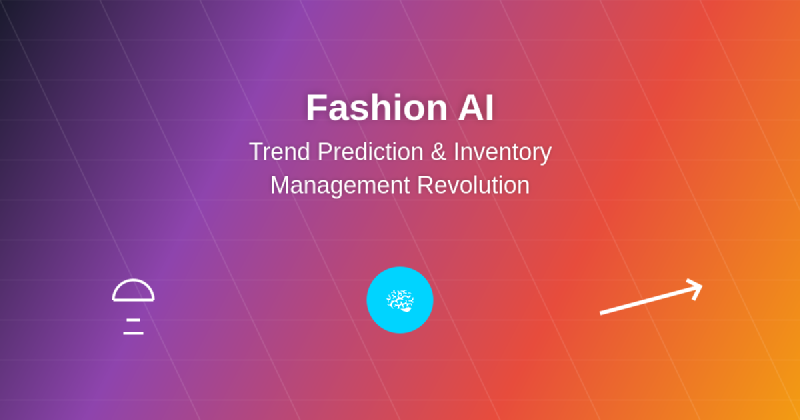The fashion industry, traditionally driven by intuition, creativity, and seasonal cycles, is experiencing a profound transformation through the integration of artificial intelligence and machine learning technologies. This digital revolution has fundamentally altered how fashion brands predict trends, manage inventory, and respond to consumer demands, creating unprecedented opportunities for efficiency, profitability, and customer satisfaction across the entire fashion ecosystem.
Explore the latest AI innovations shaping fashion and retail to understand how cutting-edge technologies are transforming traditional business models and creating new paradigms for fashion commerce. The convergence of artificial intelligence with fashion represents more than technological adoption; it signifies a complete reimagining of how fashion brands operate, from initial design concepts to final customer delivery.
The Evolution of Fashion Intelligence
The traditional fashion industry has long operated on seasonal cycles, gut instincts, and historical data analysis that often failed to capture the rapidly changing consumer preferences and market dynamics. The introduction of artificial intelligence has revolutionized this approach by providing sophisticated analytical capabilities that can process vast amounts of data from multiple sources, identify emerging patterns, and generate actionable insights that drive strategic decision-making across all aspects of fashion business operations.
Modern fashion AI systems integrate data from social media platforms, runway shows, street photography, consumer behavior analytics, weather patterns, economic indicators, and cultural events to create comprehensive trend forecasting models. These systems can identify micro-trends before they become mainstream, predict the lifecycle of specific styles, and recommend optimal product development strategies that align with anticipated market demands.
The sophistication of these AI systems extends beyond simple pattern recognition to encompass complex predictive modeling that considers cultural shifts, demographic changes, and emerging lifestyle trends. This comprehensive approach enables fashion brands to make informed decisions about product development, marketing strategies, and inventory planning with unprecedented accuracy and confidence.
Advanced Trend Prediction Technologies
Artificial intelligence has transformed trend prediction from a largely subjective process into a data-driven science that leverages multiple sophisticated algorithms and analytical frameworks. Machine learning models now analyze millions of images from fashion shows, street style photography, social media posts, and e-commerce platforms to identify emerging aesthetic preferences, color palettes, silhouettes, and styling approaches that are gaining traction among different demographic segments.
These AI systems employ computer vision technologies to analyze visual elements such as fabric textures, garment construction details, accessory combinations, and overall styling approaches. Natural language processing algorithms simultaneously analyze fashion-related content, reviews, comments, and discussions across various platforms to understand consumer sentiment, preferences, and emerging interests that might influence future purchasing decisions.
Discover how AI assistants like Claude enhance creative industries by providing sophisticated analytical capabilities that complement human creativity and intuition in fashion design and trend forecasting. The integration of AI tools enables fashion professionals to access comprehensive market intelligence while maintaining the creative vision that drives successful fashion brands.
The predictive accuracy of these systems continues to improve through reinforcement learning mechanisms that incorporate real-world outcomes, sales data, and market performance metrics. This continuous learning approach ensures that trend prediction models become increasingly sophisticated and reliable over time, providing fashion brands with competitive advantages in rapidly evolving markets.

Modern trend prediction systems demonstrate remarkable accuracy in forecasting fashion movements across different categories and timeframes. The integration of multiple data sources and sophisticated algorithms enables fashion brands to identify emerging trends months before they reach mainstream adoption, providing crucial lead time for product development and inventory planning.
Revolutionary Inventory Management Systems
Traditional inventory management in fashion retail has been plagued by challenges such as overstock situations, stockouts of popular items, seasonal demand fluctuations, and the complexity of managing diverse product categories across multiple channels and geographic locations. Artificial intelligence has addressed these challenges through sophisticated inventory optimization systems that consider multiple variables simultaneously to optimize stock levels, distribution strategies, and replenishment schedules.
AI-powered inventory management systems analyze historical sales data, seasonal patterns, promotional impacts, consumer behavior trends, and external factors such as weather conditions and cultural events to generate precise demand forecasts. These forecasts enable fashion retailers to optimize inventory levels across different product categories, sizes, colors, and locations while minimizing carrying costs and reducing the risk of markdowns due to excess inventory.
The integration of real-time data processing capabilities allows these systems to continuously adjust inventory strategies based on current market conditions, emerging trends, and changing consumer preferences. This dynamic approach to inventory management enables fashion brands to respond quickly to unexpected demand surges, supply chain disruptions, or changing market conditions while maintaining optimal inventory turnover rates.
Machine learning algorithms also optimize inventory allocation across different sales channels, including online platforms, physical retail locations, and wholesale partnerships. This multi-channel optimization ensures that inventory is positioned where it is most likely to generate sales while minimizing transfer costs and logistics complexities.

Real-time inventory management dashboards powered by artificial intelligence provide comprehensive visibility into stock levels, demand patterns, and optimization opportunities across all product categories and sales channels. These sophisticated systems enable fashion retailers to maintain optimal inventory levels while minimizing carrying costs and maximizing sales potential.
Intelligent Demand Forecasting
Demand forecasting in the fashion industry has traditionally been one of the most challenging aspects of retail operations due to the unpredictable nature of fashion trends, seasonal variations, and rapidly changing consumer preferences. Artificial intelligence has revolutionized demand forecasting by incorporating sophisticated statistical models, machine learning algorithms, and real-time data processing capabilities that generate highly accurate predictions across multiple time horizons and product categories.
Modern AI forecasting systems integrate data from numerous sources including historical sales patterns, social media engagement metrics, search trends, weather forecasts, economic indicators, and competitive intelligence to create comprehensive demand models. These models can predict demand at granular levels, including specific product variants, geographic locations, and customer segments, enabling fashion brands to make precise inventory and production decisions.
The sophistication of these forecasting systems extends to seasonal adjustment capabilities that account for holiday periods, fashion weeks, promotional campaigns, and other events that significantly impact consumer purchasing behavior. Advanced algorithms can distinguish between temporary demand spikes and sustainable trend shifts, enabling more accurate long-term planning and resource allocation decisions.
Real-time demand sensing capabilities allow these systems to detect emerging demand patterns and adjust forecasts dynamically based on current market signals. This responsiveness is particularly valuable in fast fashion environments where trends can emerge and fade within weeks, requiring rapid inventory adjustments and production modifications.
Supply Chain Optimization Through AI
The fashion supply chain involves complex networks of suppliers, manufacturers, distributors, and retailers operating across global markets with varying lead times, capacity constraints, and quality standards. Artificial intelligence has transformed supply chain management by providing comprehensive visibility, predictive analytics, and optimization capabilities that enhance efficiency, reduce costs, and improve overall supply chain resilience.
AI-powered supply chain systems analyze supplier performance data, production capacity information, logistics networks, and demand forecasts to optimize sourcing decisions, production scheduling, and distribution strategies. These systems can identify potential bottlenecks, recommend alternative suppliers, and suggest production adjustments that minimize costs while meeting quality and delivery requirements.
Enhance your research capabilities with Perplexity AI to access comprehensive market intelligence and supply chain insights that support strategic decision-making in fashion business operations. The combination of multiple AI tools creates powerful analytical capabilities that transform complex supply chain data into actionable business intelligence.
Predictive maintenance algorithms monitor manufacturing equipment performance and predict potential failures before they occur, reducing production disruptions and maintenance costs. Quality control systems use computer vision to identify defects and inconsistencies in manufactured products, ensuring that only high-quality items reach consumers while minimizing returns and customer dissatisfaction.
The integration of blockchain technologies with AI systems provides enhanced traceability and transparency throughout the supply chain, enabling fashion brands to verify ethical sourcing practices, monitor environmental impacts, and respond quickly to quality issues or recalls when necessary.
Personalized Customer Experience Enhancement
The modern fashion consumer expects personalized experiences that reflect their individual style preferences, size requirements, and lifestyle needs. Artificial intelligence has enabled fashion brands to deliver highly personalized experiences through sophisticated recommendation engines, virtual styling assistants, and customized product offerings that enhance customer satisfaction and drive increased sales conversion rates.
AI-powered recommendation systems analyze individual customer behavior, purchase history, browsing patterns, and style preferences to suggest products that are most likely to appeal to specific customers. These systems continuously learn from customer interactions, feedback, and purchasing decisions to refine their recommendations and improve accuracy over time.
Virtual styling applications use AI to help customers create complete outfits, suggest complementary items, and provide styling advice based on body type, personal preferences, and occasion requirements. These tools enhance the online shopping experience by replicating the personalized service traditionally available only in high-end retail environments.
Size recommendation algorithms analyze customer measurements, product specifications, and fit feedback to reduce sizing-related returns while improving customer satisfaction. These systems learn from return patterns and customer feedback to continuously improve sizing accuracy across different brands, styles, and product categories.
Visual Recognition and Style Analysis
Computer vision technologies have revolutionized how fashion brands analyze visual content, identify trends, and understand style preferences across different market segments. Advanced image recognition algorithms can analyze photographs, runway images, and social media content to identify specific garments, accessories, styling approaches, and aesthetic elements that are gaining popularity among consumers.
These visual analysis systems can automatically tag and categorize fashion items based on attributes such as color, pattern, silhouette, fabric type, and styling details. This automated categorization enables more sophisticated search capabilities, improved product recommendations, and enhanced inventory management through better understanding of product relationships and substitutability.
Style transfer algorithms can generate new design concepts by combining elements from different sources, helping designers explore new creative directions while maintaining commercial viability. These tools augment human creativity rather than replacing it, providing designers with inspiration and technical capabilities that enhance the design process.
Brand monitoring systems use visual recognition to track brand presence across social media platforms, identify unauthorized use of designs or logos, and monitor competitor activities. This comprehensive brand intelligence helps fashion companies protect their intellectual property while staying informed about market developments and competitive positioning.
Dynamic Pricing and Revenue Optimization
Traditional pricing strategies in fashion retail often rely on fixed markup formulas and seasonal markdown schedules that fail to optimize revenue potential across different market conditions and customer segments. Artificial intelligence has introduced dynamic pricing capabilities that continuously adjust prices based on demand patterns, inventory levels, competitive positioning, and market conditions to maximize revenue while maintaining customer satisfaction.
AI-powered pricing systems analyze multiple factors including historical sales data, current inventory levels, competitor pricing, seasonal trends, and customer price sensitivity to determine optimal pricing strategies for different products and market segments. These systems can implement sophisticated pricing tactics such as personalized pricing, promotional optimization, and clearance scheduling that maximize profitability while achieving inventory turnover objectives.
Revenue optimization extends beyond individual product pricing to encompass portfolio-level strategies that consider product relationships, cross-selling opportunities, and customer lifetime value. These comprehensive approaches ensure that pricing decisions support overall business objectives rather than optimizing individual product performance in isolation.
Dynamic markdown strategies use AI to determine optimal timing, depth, and duration for promotional pricing based on inventory levels, demand forecasts, and competitive activities. This data-driven approach to markdowns minimizes margin erosion while ensuring effective inventory clearance and maintaining brand positioning.
Sustainability and Environmental Impact
The fashion industry faces increasing pressure to address environmental concerns, reduce waste, and implement sustainable practices throughout the supply chain. Artificial intelligence contributes to sustainability efforts by optimizing resource utilization, reducing waste, and enabling more efficient production and distribution processes that minimize environmental impact.
AI-powered demand forecasting reduces overproduction by providing more accurate predictions of consumer demand, thereby minimizing unsold inventory that often ends up in landfills. Optimized inventory management reduces the need for excessive safety stock while ensuring product availability, contributing to overall waste reduction across the fashion supply chain.
Sustainable material selection is enhanced through AI systems that analyze the environmental impact of different materials, manufacturing processes, and transportation options. These systems can recommend more sustainable alternatives while maintaining quality and cost requirements, supporting fashion brands’ sustainability objectives without compromising commercial viability.
Circular economy initiatives benefit from AI technologies that optimize product lifecycle management, facilitate resale and recycling programs, and support innovative business models such as clothing rental and subscription services. These applications demonstrate how artificial intelligence can support both business objectives and environmental responsibility simultaneously.
Consumer Behavior Analytics and Insights
Understanding consumer behavior has become increasingly complex as shopping patterns evolve across multiple channels and touchpoints. Artificial intelligence provides comprehensive analytics capabilities that help fashion brands understand how consumers discover, evaluate, and purchase fashion products across different contexts and environments.
Advanced analytics systems track customer journeys across online and offline touchpoints, identifying key decision factors, influence points, and conversion barriers that impact purchasing decisions. This comprehensive understanding enables fashion brands to optimize marketing strategies, improve customer experience, and increase conversion rates across all channels.
Social media analytics use natural language processing and sentiment analysis to understand consumer opinions, preferences, and emerging interests related to fashion trends, brands, and products. These insights inform product development decisions, marketing strategies, and brand positioning efforts that resonate with target audiences.
Behavioral segmentation algorithms identify distinct customer groups based on shopping patterns, preferences, and value characteristics. These segments enable more targeted marketing approaches, personalized product recommendations, and customized service offerings that improve customer satisfaction and loyalty.

Comprehensive customer analytics systems provide deep insights into shopping behaviors, preferences, and purchasing patterns across different demographic segments and channels. This intelligence enables fashion brands to tailor their offerings, marketing strategies, and customer experiences to meet the specific needs and preferences of distinct customer groups.
Future Innovations and Industry Evolution
The integration of artificial intelligence in fashion represents an ongoing evolution with continuous technological advances promising even more sophisticated capabilities in trend prediction, inventory management, and customer experience enhancement. Emerging technologies such as augmented reality, virtual reality, and advanced computer vision are creating new possibilities for fashion commerce and customer engagement.
Augmented reality applications enable customers to virtually try on clothing and accessories, reducing uncertainty about fit and appearance while minimizing returns. Virtual showrooms and digital fashion shows provide immersive experiences that transcend geographic limitations and create new opportunities for brand engagement and product presentation.
The development of more sophisticated AI models promises improvements in prediction accuracy, personalization capabilities, and automated decision-making that will further streamline fashion business operations. These advances will enable smaller fashion brands to access enterprise-level analytical capabilities while allowing larger organizations to achieve even greater efficiency and customer satisfaction.
The convergence of AI with other emerging technologies such as Internet of Things sensors, blockchain verification, and advanced manufacturing techniques will create integrated ecosystems that transform every aspect of fashion business operations from initial design concepts through final customer delivery and post-purchase service.
The future of fashion AI lies not in replacing human creativity and judgment but in augmenting human capabilities with sophisticated analytical tools that enhance decision-making, improve efficiency, and create new possibilities for innovation and customer satisfaction. This collaborative approach between human expertise and artificial intelligence will drive the continued evolution of the fashion industry toward greater sustainability, efficiency, and consumer responsiveness.
Disclaimer
This article is for informational purposes only and does not constitute professional business or investment advice. The views expressed are based on current understanding of AI technologies and their applications in the fashion industry. Fashion businesses should conduct thorough research and consider their specific requirements when implementing AI-powered solutions. The effectiveness of AI systems may vary depending on implementation quality, data availability, and specific business contexts. Market conditions and consumer preferences in fashion are subject to rapid change, and AI predictions should be considered alongside human expertise and market knowledge.
